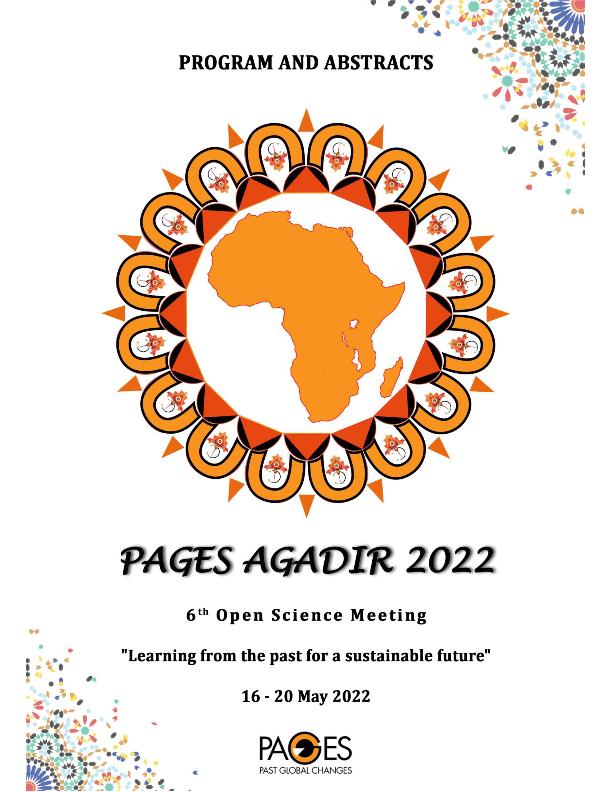Evento
Dendrogeomorphology of the avulsion event on the Pedregoso Creek alluvial fan (Argentina, Puelo Lake) triggered by the historic 1960 earthquake
Tipo del evento:
Reunión
Nombre del evento:
6th Past Global Changes Open Science Meeting
Fecha del evento:
16/05/2022
Institución Organizadora:
Past Global Changes;
Título del Libro:
Abstract Book of the 6th Past Global Changes Open Science Meeting
Editorial:
Past Global Changes
Idioma:
Inglés
Clasificación temática:
Resumen
The most intense earthquake worldwide ever measured occurred in Valdivia, Chile, in May 1960. Its ocurrence resulted in ecosystem´s impacts on the Argentine Andean region in northwest Patagonia during and after the event. A known case is the Tsunami in Lake Nahuel Huapi that destroyed the Bariloche port. On the other hand, less is known about the Pedregoso Creek (PC) flood in the north bayhead of the Puelo Lake. Historical local farmers who used to cross the PC recall that after the quake, small natural water bodies placed in the middle basin got undammed leading to a big flood in the lower basin. As a result, a channel avulsión took place in the PC alluvial fan and the location of its rivermouth changed drastically. Nowadays, the flood and the avulsion event is still recognizable in the alluvial fan due to a lower forest density that had slowly reestablished on the paleochannel sector. With this framework, we are conducting dendrogeomorphological studies in the alluvial fan in order to characterize the event, explore other conditions present during 1960th (e.g. above average subsequent migration dynamics. For this purpose, we estimated forest density (tree/ha) and took increment core samples at multiple sampling points (distanciated 50 m) along three arcuate transects that radially dissect all the Predregoso alluvial fan. After the land survey,we zonificated the alluvial fan in six different sectors. The sectors were characterized by theforest maximum density value and the minimum potential tree establishment date ofthe last fluvial activity (oldest dated tree established), as follow: 1) the active PC channelwith no trees; 2) a fluvial semi-active sector with 152 trees per ha and a minimal establishment date of 1987; 3) a fluvial inactive zone with 962 trees per ha and an establishment date of 1967; 4) the paleochannel sector, active before the earthquake and the flood events, with 337 trees per ha and an establishment date of 1973; 5) a paleochannel middle fluvial bar sector, with 429 trees per haand an establishment date of 1963, and finally; 6) an undisturbed forest sector with 1975 treesper ha and an establishment date of 1832. These results, with no intermediate dated sectorbetween the undisturbed (1832) and the paleochannel (1963) sectors, may preliminary suggest that the avulsión event was unique over the last two centuries. The younger sectors (2 and 3) are eflecting a gradual channel migration to the north side of the alluvial fan after the avulsion. Future work will continue surveying higher areas of the basin looking for lost small water bodies (damms), directed dendrogeomophological sampling to reinforce the dating of the avulsion event and, lastly,analyzing instrumental climatic data to establish whether the earthquake took place on a wet year resulting in an increased level of the Puelo Lake.
Palabras clave:
PATAGONIA
,
ANDEAN RANGE
,
FLUVIAL DENDROGEOMORFOLOGY
,
CHANNEL
,
FLOOD
Archivos asociados
Licencia
Identificadores
Colecciones
Eventos (IRNAD)
Eventos de INSTITUTO DE INVESTIGACIONES EN RECURSOS NATURALES, AGROECOLOGIA Y DESARROLLO RURAL
Eventos de INSTITUTO DE INVESTIGACIONES EN RECURSOS NATURALES, AGROECOLOGIA Y DESARROLLO RURAL
Citación
Dendrogeomorphology of the avulsion event on the Pedregoso Creek alluvial fan (Argentina, Puelo Lake) triggered by the historic 1960 earthquake; 6th Past Global Changes Open Science Meeting; Agadir; Marruecos; 2022; 119-120
Compartir




